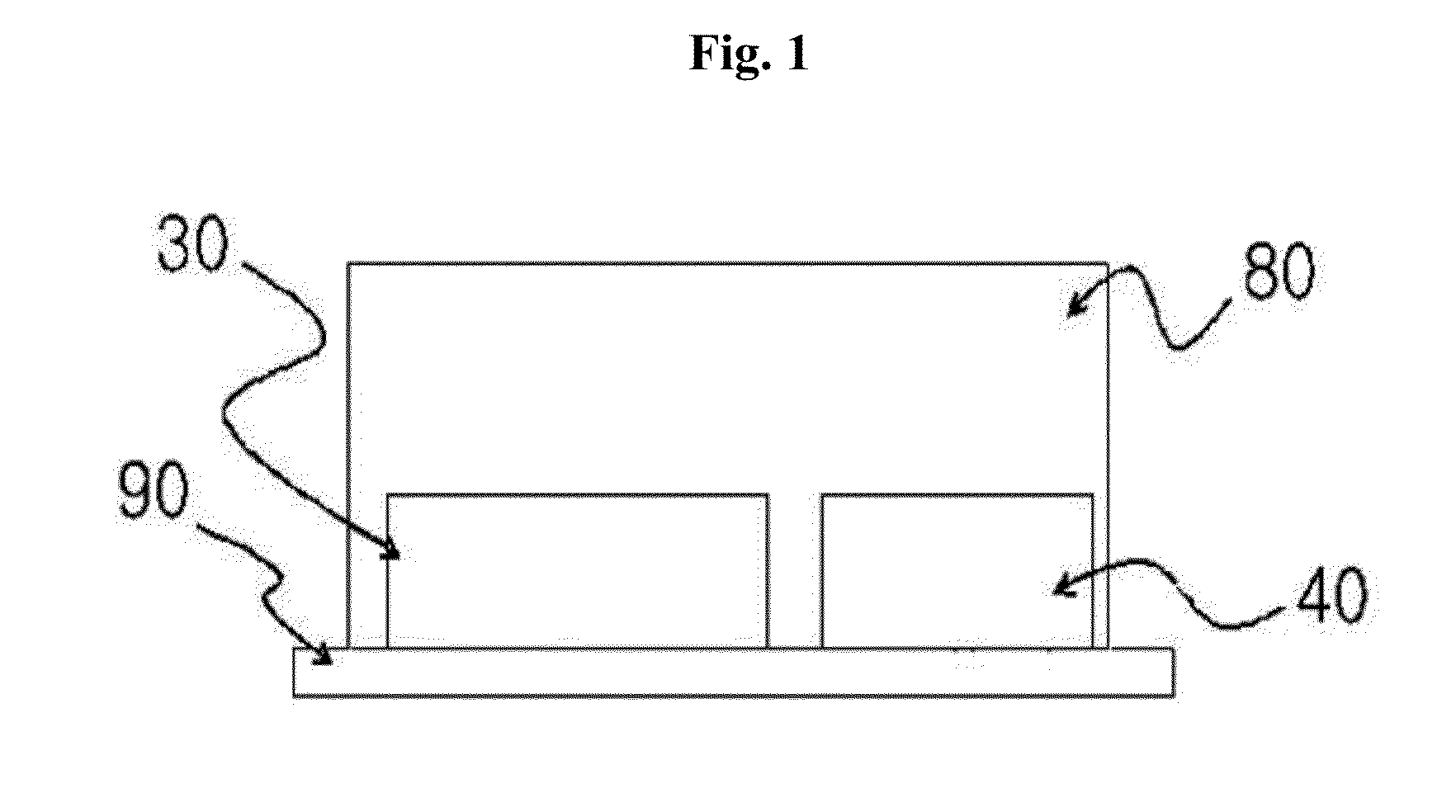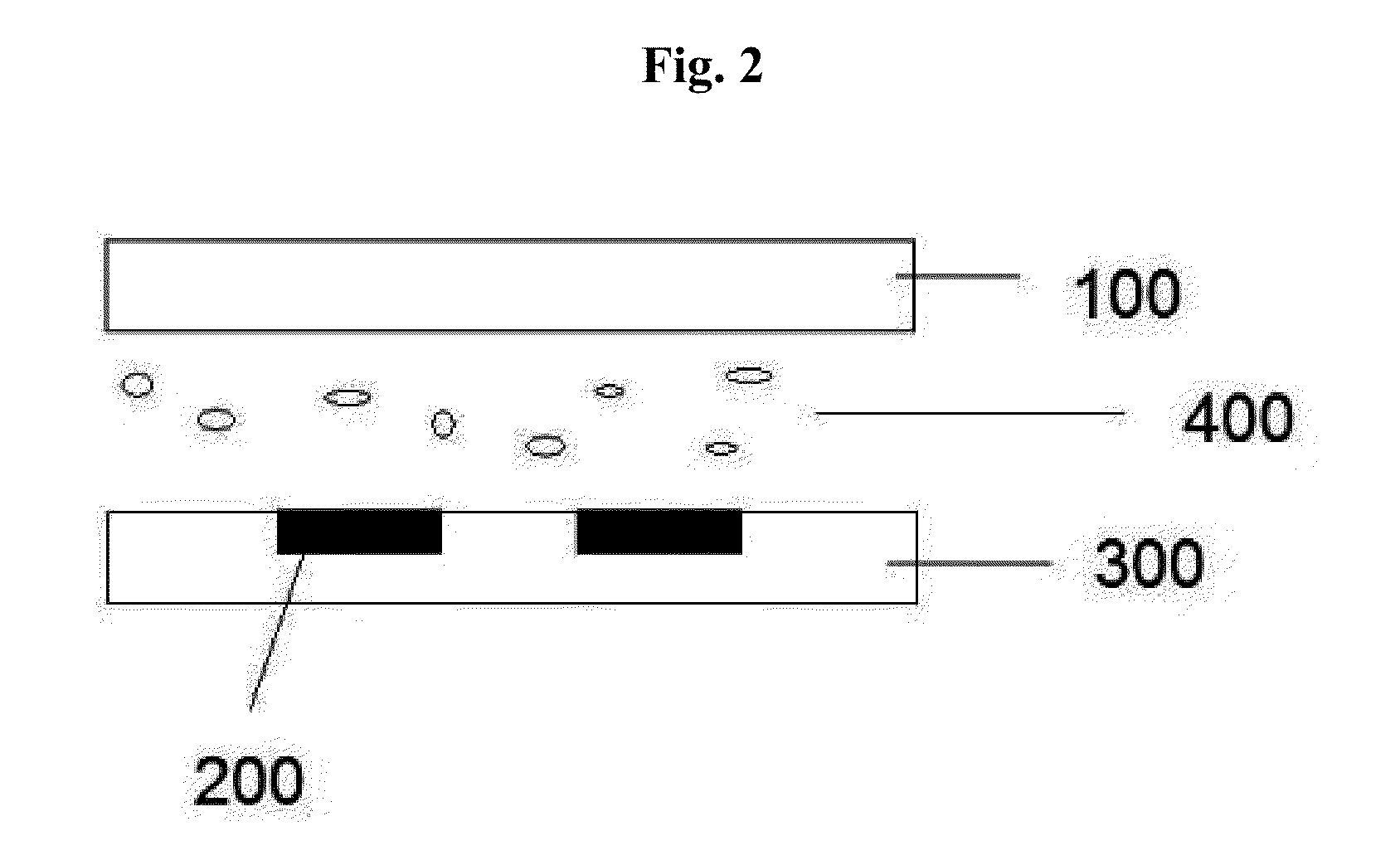Apparatus for separating fine particles using magnetophoresis, and method for separating fine particles using same
a technology of magnetophoresis and apparatus, which is applied in the field of apparatus for separating fine particles using magnetophoresis and a method can solve the problems of low efficiency for separating fine particles, difficult or impossible to obtain information, and long separation time, so as to improve the efficiency of separating and reduce the time. the effect of separation time and improved magnetic for
- Summary
- Abstract
- Description
- Claims
- Application Information
AI Technical Summary
Benefits of technology
Problems solved by technology
Method used
Image
Examples
preparation example 1
Preparation of Apparatus For Separating Fine Particles Combined With Magnetic Particles By Magnetophoresis
[0108]In order to form a microfluidic channel, a Ti / Cu / Cr seed layer was deposited on a bottom glass substrate of 0.7 mm thick (Borofloat™, Howard Glass Co., Worchester, Mass.), a pattern was formed by photoresist, and then a ferromagnetic nickel wire of 30 μm thick was formed through a plating process.
[0109]In this Example, two ferromagnetic nickel wires were contained in the lower glass substrate of a microfluidic channel for separation part, and one wire of them was contained with an angle of inclination to the direction of sample flow of 5.7°, and the other wire was patterned, wherein the angle of inclination was 7.1° at first followed by being changed to 11.3 ° at the end of the microfluidic channel for separation, and then changed again to 90°.
[0110]In order to reduce the phenomenon that cells are attached to the surface of the microfluidic channel, the ferromagnetic nicke...
example 1
RNA Separation
EXAMPLE 1-1
RNA Separation From Blood
[0112]As magnetic particles, 2.8 μm diameter magnetic beads (Dynabeads Oligo (dT)25) were used. Human blood 50 μl was collected from a finger, and RNA lysis buffer 175 μl A was mixed with the magnetic particles to manufacture a sample comprising RNA combined with the magnetic particles. The sample prepared above was injected into the sample inlet of the apparatus for separating fine particles manufactured in Example 1.
[0113]A process for separating RNA in the fine particle separating apparatus comprising a plurality of fine structures of a magnetic material, when the angle of inclination to the fluidic flow was changed at the same point with the same angle, was mimetically illustrated in FIG. 13.
[0114]Images of white blood cell-dissolved blood and the magnetic particles flowing along the channel when an external magnetic field was applied or not applied to the particle separating apparatus manufactured in Preparation Example 1 were ...
example 1-2
Measuring Separation Efficiency According To Sample Flow Rate
[0115]The procedure of Example 1 was repeated, and efficiency for separating the RNA combined with the magnetic particles and purity of the separated RNA when sample flow rate was changed to 10, 15, 20 and 25 ml / h, respectively, were measured, and the results were shown in FIG. 15a and FIG. 15b.
[0116]As shown in FIG. 15a and FIG. 15b, according to increase of the sample flow rate, the efficiency for separation was decreased. Accordingly, it could be found that: the efficiency for separation can be controlled by changing the sample flow rate according to the fine particles to be separated; and in the case of the blood, it is preferred that the sample flow rate may be 15 to 20 ml / h in terms of the efficiency and the speed for separation in order to separate RNA.
PUM
| Property | Measurement | Unit |
|---|---|---|
| magnetic field | aaaaa | aaaaa |
| angle | aaaaa | aaaaa |
| angles | aaaaa | aaaaa |
Abstract
Description
Claims
Application Information
 Login to View More
Login to View More - R&D
- Intellectual Property
- Life Sciences
- Materials
- Tech Scout
- Unparalleled Data Quality
- Higher Quality Content
- 60% Fewer Hallucinations
Browse by: Latest US Patents, China's latest patents, Technical Efficacy Thesaurus, Application Domain, Technology Topic, Popular Technical Reports.
© 2025 PatSnap. All rights reserved.Legal|Privacy policy|Modern Slavery Act Transparency Statement|Sitemap|About US| Contact US: help@patsnap.com



